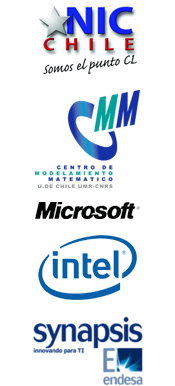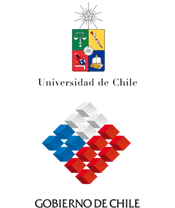Travelling to Santiago
About Santiago
Getting to and from the airport
From the airport: We recommend you take a taxi. Right after you go through customs, go to the "taxi oficial" counter, for $14.000 (some USD $25) they will bring you to your hotel through santiago's brand new highway (costanera norte). Make sure the taxi does take the highway as this will save you 25 minutes. The trip should be around 25 min long. Another option is to approach the "Tur Bus" or the "Transvip" counter, they run vans that will drive you to your hotel for $5.000 or so (USD $9). The trip should be around 50 min long.
To the airport: Simply ask your hotel to call a taxi or van for you. The rates will be approximately the same as above. If you choose to take a taxi, again make sure it takes the highway. You could also catch a taxi on the street. In this case, it is a good idea to agree on a price beforehand, if you offer $12.000 the driver will most likely accept.
You do not need to tip taxi drivers in Chile
Facts
- Mean March temperature: 14 C (57.2 F)
- Mean March rainfall: 1.7 cm (0.67 in)
- Sunrise on October 20, 2009: 6:55 am
- Sunset on October 20, 2009: 8:00 pm
- Latitud: 33° 26' South
- Longitud: 70° 39' West
- Altitude: 567 mts
About Chile
Geography
Over 4.500 kilometers of mountains and seashore make Chile the longest and narrowest country in the world with startling contrasts and extreme beauty. Attractions range from the towering volcanic peaks of the Andes (with the highest volcano in South America), the most arid desert worldwide, ancient forests in the Lake District and hosting the coldest yet most beautiful icy scenery of the southern Glacial Fields.
Chile is a land of contrasts with its lakes, snow, millennial forests, and sand and iron summits. Its people are friendly and a mixture of Native Indian, Spanish, German, Italian, English, Croatian, Arabian, and other backgrounds; its inhabitants are people who once traveled to this exotic land, fell in love with it and stayed.
To the North, Chile borders with Peru, to the Northeast with Bolivia. In the northern part of Chile, the land has broad sandy beaches, desert and the Andes. There, you will find the largest copper mines in the world, salt flats, archaeological sites, lagoons and volcanoes over six thousand meters high.
The central area of the country is greener than the North due to increased rains and therefore, allowing for a much more developed agricultural sector. Chile's best known wines are grown in this area, which is also known for its luscious fruits and vegetables, rodeos, mountain-climbing, colonial buildings and the opportunity to ski in the morning and sunbathe in the beach in the afternoon. The South is host to rivers running wild, snow-capped volcanoes, thermal hot springs, fly-fishing, ancient forests visited and studied by Charles Darwin, beautiful fjords, small picturesque towns founded by German immigrants and the biodiversity unique of Patagonia. The pathway across Cape Horn leads to Chile's greatest treasure: its Antarctic territory, surrounded by penguins, whales and walruses swimming wild and inhabited by Chilean families and more than a few bold and daring scientist.
Finally, Chile also has the privilege of owning the mysterious Easter Island and its silent giant statues, which are the legacy of a fascinating civilization disappeared long ago.
Visa
Citizens of Argentina, Brazil, Paraguay and Uruguay can enter Chile only with their national identification card. Any other country requires a valid passport to be presented at the port of entry. Following is a list of countries that do not need a visa to visit Chile (confirm at Chile's local consulate!!):
Argentina, Australia, Austria, Belgium, Bolivia, Brazil, Canada, Colombia, Costa, Rica, Croacia, Czeck Republic, Denmark, Dominican Republic, Ecuador, El Salvador, Finland, France, Germany, Greece, Guatemala, Honduras, Hungary, Indonesia, Iceland, Israel, Italy, Japan, Malasya, Morroco, Mexico, Netherlands, Nicaragua, Norway, New Zealand Panama, Paraguay, Peru, Poland, Portugal, Singapure, Spain, South Africa, Sweden, Switzerland, Turkey, Ukraine, Uruguay, United States, United Kingdom, Venezuela.
Citizens from USA, Canada, Mexico and Australia do not need a visa, but have to pay a reciprocity entrance fee (cash) at the Santiago International Airport Immigration Office. Up-to-date the entrance fees are: U.S.A. US$ 131, Canada US$ 132, Australia US$ 56, Mexico US$ 15. Citizens from other countries do not have to pay this fee.
Citizens of the countries not mentioned in the list above, must contact the local Chilean Consulate or the nearest mission to request the visa. Should you require further information on Chilean Consulates.
Transportation
Driving in Chile
Renting a car and driving in Chile is, generally speaking, easy and convenient. Santiago streets are well organized with street signs, but, like in any big city, driving during rush hours can be stressful. Drivers normally drive fast although the traffic rules are respected, especially the stop and yield signs, and for pedestrian crossings.
You should always carry your drivers license and vehicle registration, since police check frequently. Most countries licenses are honored by car rentals and police controls, although strictly speaking an international license is required.
A seat belt is mandatory for the driver and companion. Smoking, using a cellular phone or a Walkman is prohibited for the driver. Chilean policemen (Carabineros de Chile) will schedule an appointment for you to speak with the local Judge in case of an infraction and the license is always taken. Carabineros are always polite and comprehensive especially with foreigners.
Driving under the effects of alcohol is a severe offense. You could be fined or arrested depending on the level of alcohol intoxication. Speeding is also punished. Maximum speed, where otherwise stated, is 100 km/h (65 mph). In urban areas it is 50 km/h (30 mph).
There are many agencies that rent cars per hour, day, week or month. They generally require the driver to be over 21 years of age, have a valid national or foreign driving license, and a major credit card as guarantee. For further information, please see here []().
Police
Chilean policemen are not corrupt, do NOT try to brive them.
Taxis
Many taxis are available, distinguishable by being black with yellow tops. All of them have their registration number visible and a taximeter. Taxi drivers are mostly honest. Smoking is forbidden inside public vehicles.
The Metro
The Santiago subway or Metro is a model of cleanliness and good service. It is fast, secure and inexpensive.
For more information on the Metro network see here.
Urban Buses ("Micros")
Urban buses are ubiquitous in all of GREATER Santiago and main cities. Buses, also called "Micros", are easily spotted, as they are painted white with green, red, orange, purple, yellow, etc. stripes. The standard fare is approximately US$1.00. The payment method us based on an electronic proximity card called Bip which can be purchased, among others, at any subway station.
Interurban buses
There are several companies that service every city in Chile. Service is good and schedules mostly honored.
Interurban bus stations in Santiago:
- Terminal Santiago: Av. B. O'Higgins 3848, Santiago (phone 779-1385)
- Terminal Los Heroes: Tucapel Jiménez 21, Santiago (phone 696-9087)
- Terminal Alameda: Av. B. O'Higgins 3714, Santiago (phone 776-1038)
- Terminal San Borja: Av. B. O'Higgins 3714. Santiago (phone 776-0645)
Trains
Sistema Estatal de Ferrocarriles (EFE) runs only from Santiago to the south of the country, passing, among other cities, through Rancagua, Talca, Chillan. On the other hand, there is system, traveling from Santiago to Rancagua, stopping at most of the towns between them. It is fairly efficient but rather slow, and its coaches are similar to those of the subway. There is also a train in the extreme north of Chile, traveling from Arica to La Paz (Bolivia).
To access EFE's website see here
Security
Hotels
Valuables should be deposited in the safe, as well as passports. Keep your Migration card at hand (stamped by customs when you enter the country) as well as some form of ID such as your driving license. In the event of theft you should immediately contact the police, "Carabineros de Chile" (call 133), and report the lost documents to your consulate.
Backcountry
Backcountry areas are very safe, in established campgrounds as well as out in the wild. The most common danger is getting lost or stranded when hiking in the mountains. The mountains can be very cold even in summer time and weather is unpredictable and treacherous, so be prepared. If you are going out without a guide, inform the police or the Andean Rescue Service ('Cuerpo de Socorro Andino') of your itinerary.
Women traveling alone
It is becoming much more common to see women traveling alone in Chile, and it is considered a good country for this. This is especially true in places frequented by tourists.
It is very normal for Chilean men to be very open with compliments, ("piropos") and these can sometimes be rude. The best action is ignore such behavior. There is an instinctive (or cultural) need to protect women here, especially if they are alone.
Generally speaking, Chilean people are generous and welcoming to foreigners, so you will be warmly received, especially in small cities.
We don't recommend hitch-hiking to solo women travelers.
Emergency Numbers
- Ambulance: 131
- Firemen: 132
- Police: 133
- Police Information: 139
Health
Vaccinations
No vaccinations are required to enter Chile.
Water
In general the water supply is safe, although it is always advisable for sensitive people to drink bottled water for the first few days. Bottled water is available everywhere.
Raw food
It is generally not advisable to eat uncooked vegetables that grow close to the soil (i.e., lettuce, carrots, strawberries, etc.), unless you get them from an established supermarket chain (Jumbo, Lider, Unimarc, etc.) who monitor the source of their products. There are a large variety of packed.




